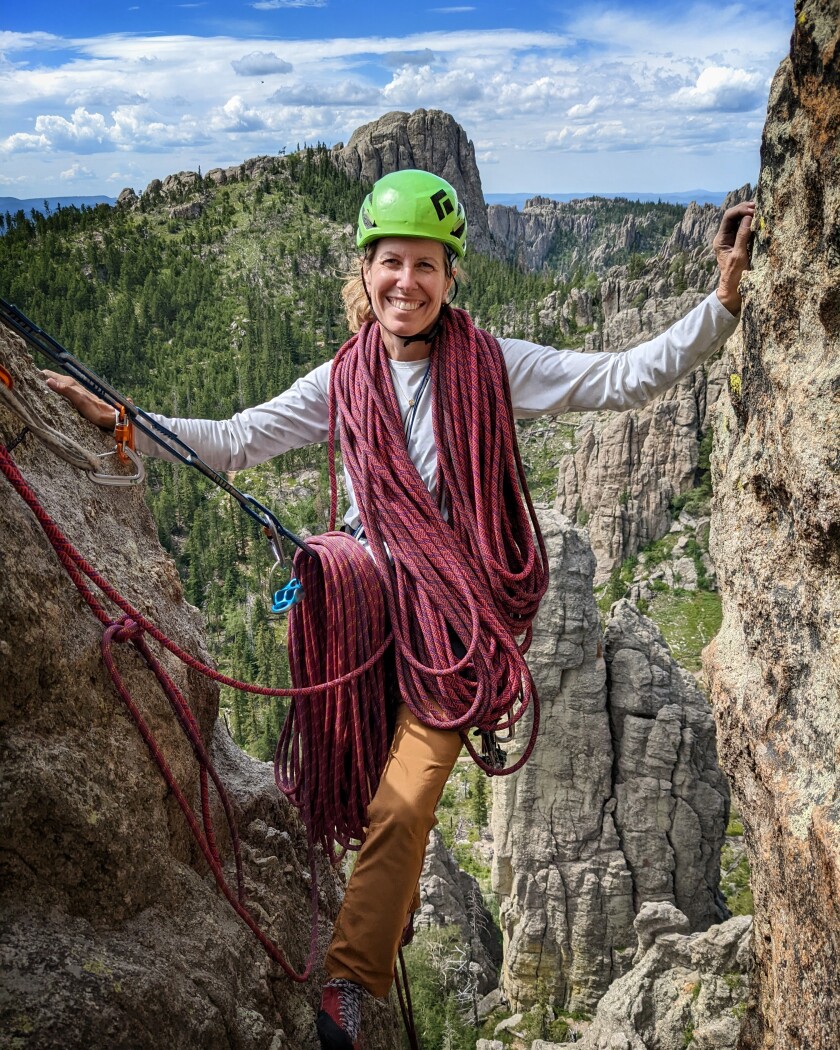DULUTH — Of the 24 photos of climbers in the second edition of “Rock Climbing Minnesota and Wisconsin,” published in 2012, only three are of women.
So when Katie Berg, a University of Minnesota Duluth graduate, and Angie Jacobsen, of St. Paul, took over putting together the third edition of the book, the duo wanted to make sure climbers who were women, people of color, LGBTQ and of different body sizes were photographed.
ADVERTISEMENT

“We really wanted to give them some representation so they could look in a book and be like, ‘Oh, I could go climbing. There’s somebody that looks like me,’” Jacobsen, the book’s photographer, said.
She said photos of men and women in this edition are closer to 50/50.
Berg, the book’s author, also tried to include more perspectives, using more than 100 interviews to describe climbing routes around the state. “I tried to make sure that I got as many diverse voices as possible, a lot of them on the same routes,” she said.
It made the descriptions more “universal,” she said.
The book, published by Falcon Guides, was released in July. Unlike the previous version, it doesn’t include climbing areas in Wisconsin, focusing on more than 1,100 routes in Minnesota and Onishishin in Ontario, just 10 miles north of the Minnesota border.

The two began the project in August 2019, eventually making it to 14 of the 15 climbing areas detailed in the book. (Canada was out of reach during the pandemic.)
Not every single route was climbed by the duo, but through a combination of their own climbing, interviews with other climbers, reviewing old guidebooks and pamphlets, and scouring websites and apps that discuss many of the routes, each route in the guidebook has a name, a difficulty rating, quality rating and description.
ADVERTISEMENT
The name of the climbers who made a route’s first ascent is also included, if known (the first ascensionist traditionally names a route). Confirming some first ascensionists included sifting through newspaper clippings, Berg said.
Berg estimates she rewrote 90%-95% of the last guidebook.
This is the second guidebook written by Berg, an English professor at Anoka-Ramsey Community College in Coon Rapids. She previously taught classes at Lake Superior College and University of Minnesota Duluth when she was living in Duluth.
Her first guidebook, “North Shore Adventures,” published by Adventure Publications in 2018, detailed more than 40 hiking, biking and paddling options along Minnesota’s shoreline with Lake Superior.

It’s the first guidebook for Jacobsen, a “science nerd” and “data nerd” currently doing contract work on COVID-19 data. In addition to taking many of the book’s photos and curating the others, she also designed the book’s maps and other graphics.
Both experienced climbers and climbing guides, Berg focused on writing while Jacobsen focused on visuals.
“The best part was that she took on the stuff that in my last guidebook, for me, was the big nightmare, because I liked the writing side of it and I didn’t want to deal with maps, (topographical maps) and all that,” Berg said. “She took on the parts that I didn’t want to do.”
ADVERTISEMENT
By organizing climbing trips to all the different areas around the state, each got to experience something new.
Berg is already familiar with all of the North Shore areas, like Palisade Head, Shovel Point and Sawmill Creek Dome, got to climb more of Red Wing and the southern half of the state. “They’re pretty amazing,” she said.
For Jacobsen, it meant climbing more of the North Shore than she’d ever before.
“It was kind of intimidating,” she said. “How am I supposed to do this? I’ve never ever been there. But we organized these trips and got people to come up to climb and got photos and it was great. That was really cool.”
Berg echoed that, and said the guidebook-writing process led to meeting more of the state’s climbing community. They were all willing to share their thoughts on what they had just climbed, she said.
“The biggest thing that really stood out was the generosity of the community,” Berg said.





















